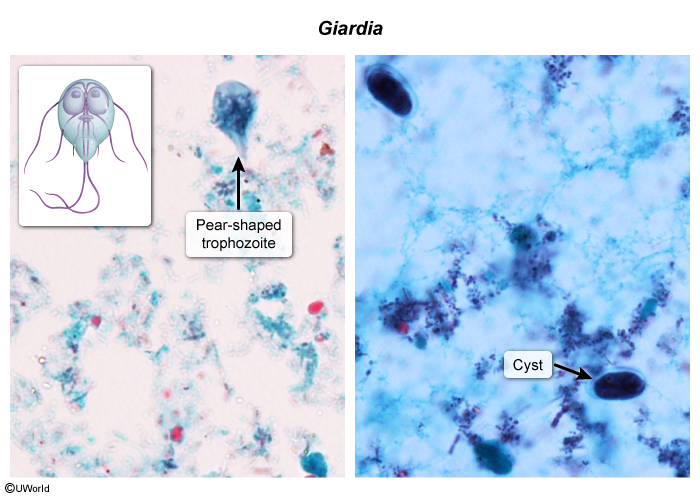Giardiasis
Article Sections
Introduction
Giardia duodenalis (also known as G intestinalis or G lamblia) is a noninvasive, protozoan parasite that causes giardiasis, a common worldwide diarrheal illness. Transmission occurs through fecal-oral spread or by contaminated water or food, and diarrhea can be acute to chronic (eg, malabsorption, weight loss).
Pathogenesis
G duodenalis is an noninvasive, protozoan parasite that exists in 2 forms: cyst (infective stage) and trophozoite (pathogenic stage). Following cyst ingestion, gastric acid stimulates cyst breakdown and promotes the release of trophozoites from the cyst in the small bowel. The motile trophozoites adhere to the intestinal brush border in the duodenum and jejunum, triggering a mucosal inflammatory response. Disruption of epithelium tight junctions between small intestinal enterocytes leads to malabsorption, particularly of fats. Symptoms, however, do not present immediately after ingestion as the organism requires 1-2 weeks for cysts to mature into trophozoites in the host intestines. Once trophozoites move forward toward the colon, they revert to the infectious cyst form, which are excreted into the stool.
Continue Learning with UWorld
Get the full Giardiasis article plus rich visuals, real-world cases, and in-depth insights from medical experts, all available through the UWorld Medical Library.
Images
